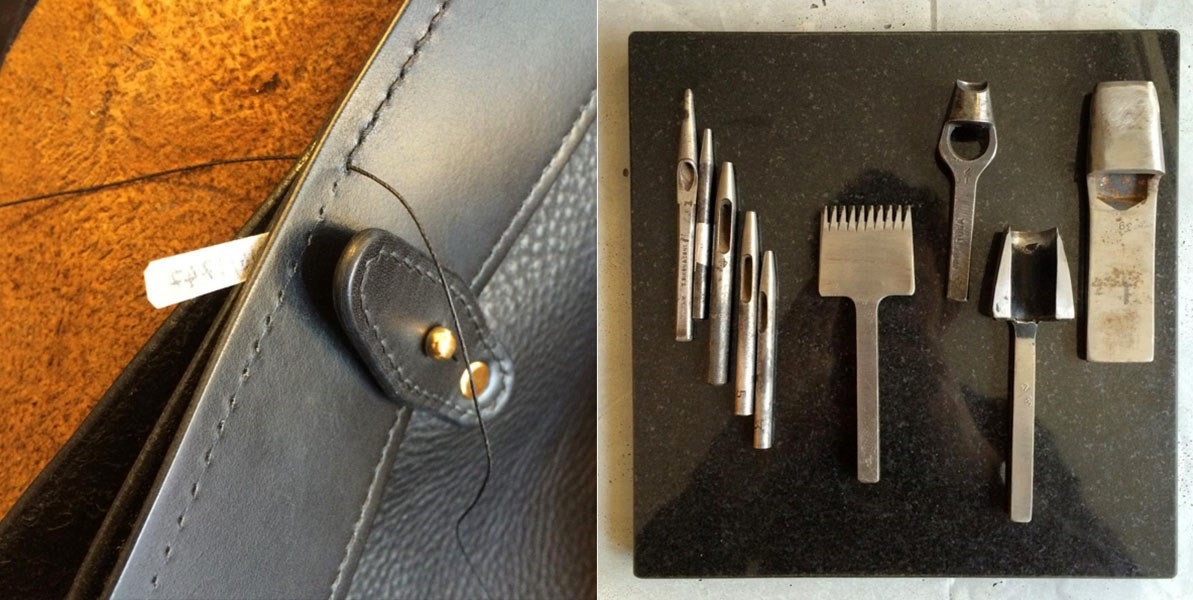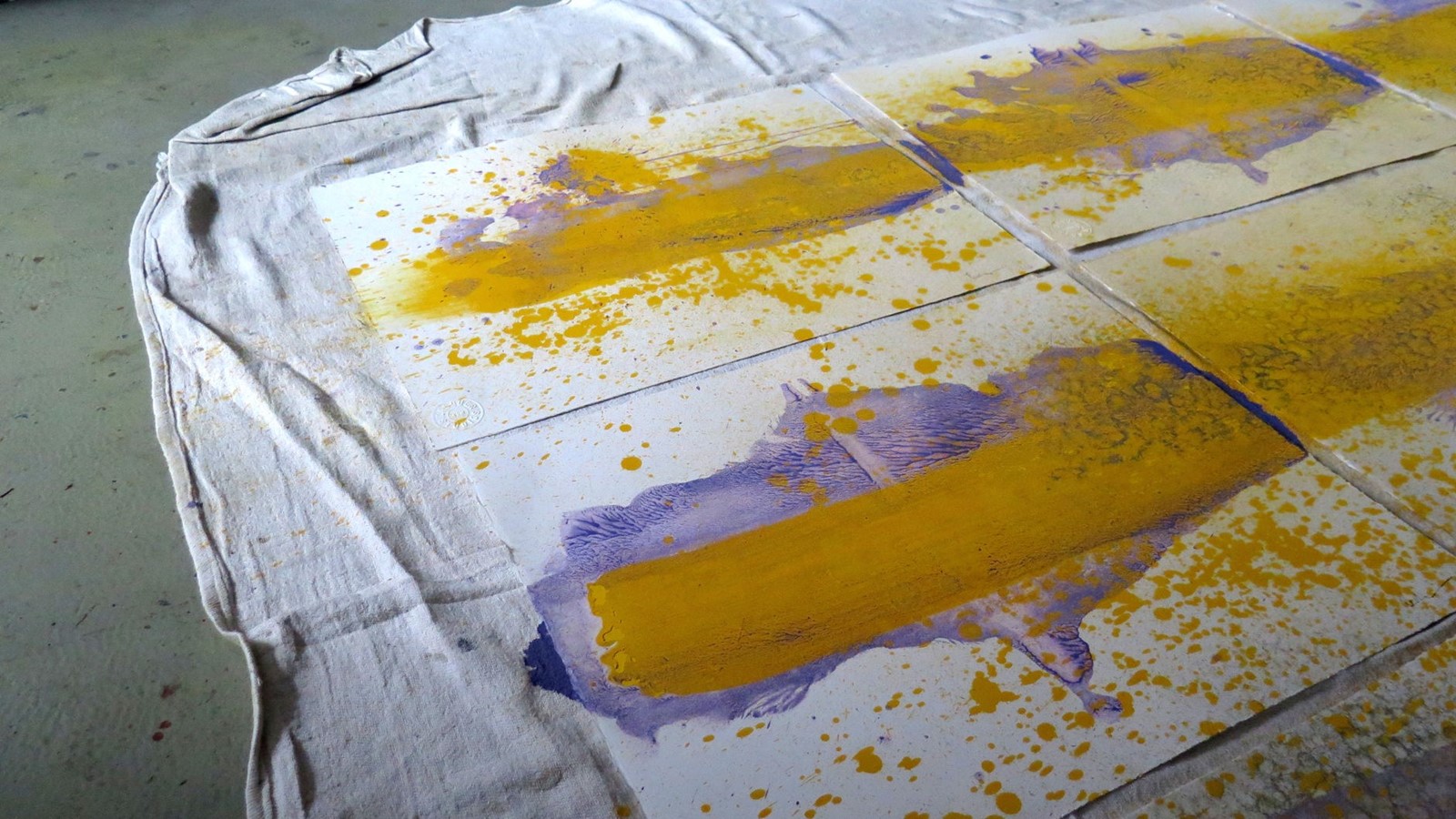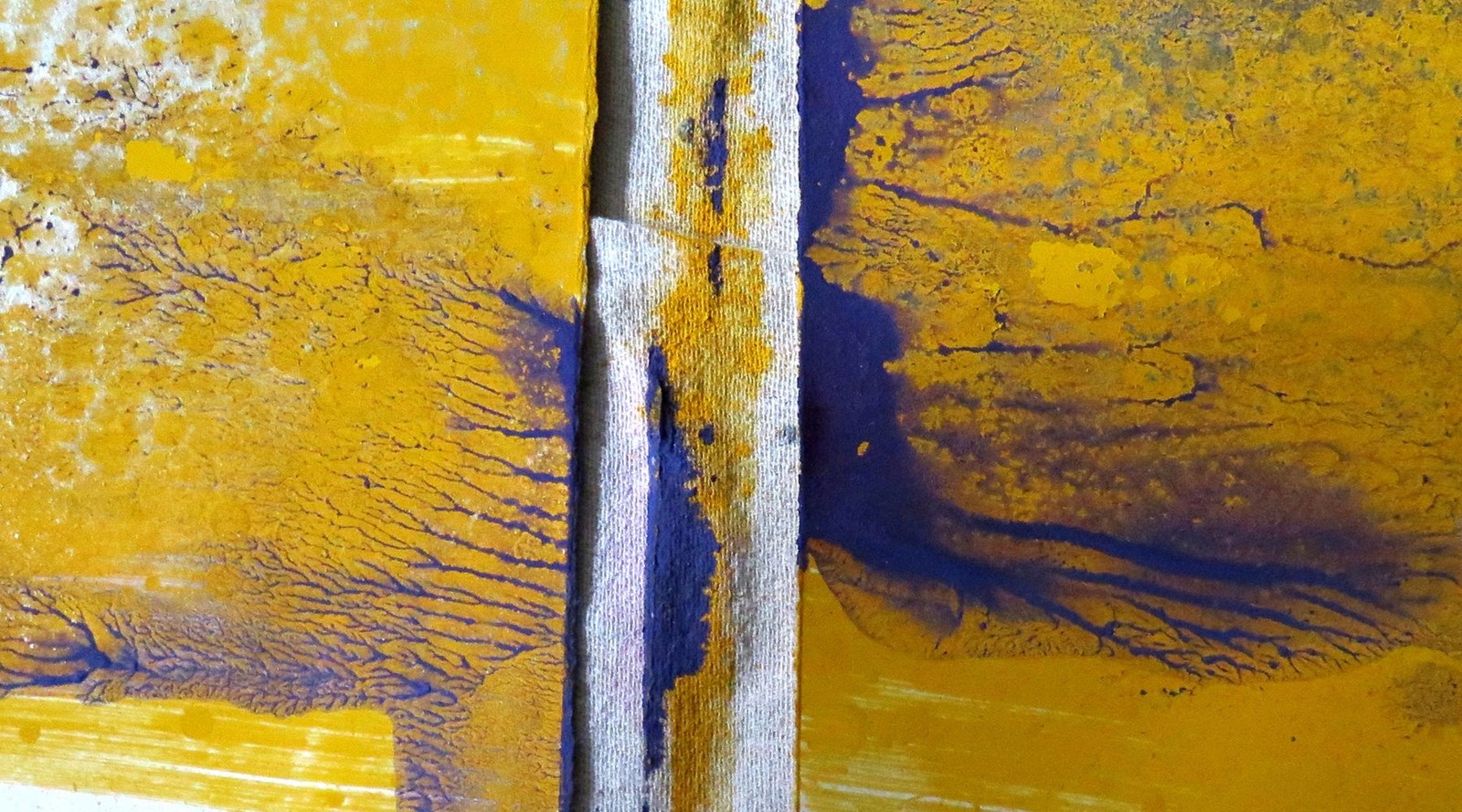While Mark Tallowin evidently derives pleasure from working alone, a practice he has placed at the core of his three-year-old leather brand, he is ebullient company when he clocks off. When I visit his studio shop on Windmill Street in Fitzrovia for a brief chat, he is at his desk, needle in hand, finishing off a leather card carrier. He immediately takes out a bottle of whisky and two glasses. Discussion ranges from artist Donald Judd’s Chinati Foundation in the isolated Texan town of Marfa (also home to the Elmgreen and Dragset Prada desert sculpture), where Tallowin worked after studying fine art at London's Goldsmith’s, to his friend Adele Stafford’s woven garments, and his previous career as a tree surgeon. We discuss the other brands that appear in this series, both of whom he describes as "role models" before he promises to lend me the book Companies that Choose to be Great Instead of Big by Bo Burlingham. When we meet again for the interview, Tallowin warns me that he might veer off the subject, and indeed he does (interestingly so), but when it comes to his work, he is deadly focussed: “This is it, I think. I want to make bags for the rest of my life.”
“I built a forge out of cowboy charcoal brand Mesquite, a hairdryer and a bit of oil piping” – Mark Tallowin
It was during his time in the Texan desert that he developed a taste for hardware, initially hammering out abandoned offcuts of railway track into knives. “I built a forge out of cowboy charcoal brand Mesquite, a hairdryer and a bit of oil piping. I hammered out slithers of rail track into knives – no-one can hear you in the desert.” His knives needed sheathing, culminating in an art installation for a double bladed knife for an exhibition in Marfa that was an exercise in how far you can copy yourself. Then it became bags, and not art anymore,” he reflected. Later, perched on a branch in his later role as a tree surgeon, it dawned on him that all he could think about was making bags and their mechanisms and how they could function perfectly. “I called time on trees,” he said. After a painstaking period of working obsessively on his first designs, he founded Tallowin in 2012 with four prototypes with the premise that everything would be made by him alone. Each bag is made from vegetable tanned Italian leather, hand stitched by Tallowin, and a specialist in Hatton Garden plates all of the brass hardware with gold, which does not tarnish. All orders are placed through him and are numbered with the owner’s name written on a vellum note hidden in the lining. Unlike some nods to personal service or ‘handmade’ in luxury that smack of Starbucks scrawling your name on a paper cup, this is the real deal.

When it came to promoting his new company, his production methods meant he couldn’t afford to send out samples and he was dissatisfied with the sensorial limitations of a press release. He also wanted to road test the bags with a discerning audience, so he used his artist’s brain to come up with a solution: The 4.4.8. Experiment. Part marketing strategy, part product test and part ‘real life’ installation, the idea was that four women – starting with Jess Cartner-Morley of The Guardian, Camilla Johnson-Hill of The Production Club, Illustrator Jo Ratcliffe and one anonymous woman – would test four handbags from his Core Collection for one week, then choose another person to do the same. This was repeated for eight weeks and at the end of each week each woman (and a man) who used a bag gave Tallowin feedback, providing him with useful insight into what they were like to use. “To be honest, they were pretty close, but there were two-three small tweaks on each,” he commented.
“I am very happy being small and having total autonomy in what I am doing” – Mark Tallowin
Now, things are gathering momentum for the 32-year-old craftsman. In November last year, British luxury goods association Walpole recognised his skill by selecting him to participate in its ‘CRAFTED’ mentoring programme, designed to preserve British craft and encourage entrepreneurship. Orders have stacked up, and there’s a waiting time of several months. What’s more, investors have started knocking and offering their services. Tallowin, however, has other ideas. “I’m trying to run a business, but I’m trying to run a business that’s different to the way most businesses work,” he said. “I am very happy being small and having total autonomy in what I am doing,” he continued. I ask whether he would consider taking on an apprentice, allowing him to expand slowly while keeping a close hold on production, but he thinks that unlikely. “I don’t think so because then there would be a two-tier system where it would be like “oh this is a Tallowin bag, and this one is made by someone else. When I’m making the bags even I’m not allowed to have an idea and try to improve something, even microscopically, I come undone because I’ve spent so long developing everything,” he reflected. “If anything, I’m more likely to do the opposite than take on more people, to go away and be really reclusive,” he added. “People talk about a ‘race to the bottom’ as being inevitable, but if you start thinking the opposite way, then everything gets better.”

One way that Tallowin does let other people into his business is through a collaborative project called ‘Editions’, for which he commissions artists to make limited runs of work at each equinox and solstice during the year. “The idea for Editions was first that it gives me a good excuse for a party, which I think is what we need, but moreover, it means I can work with other creative practitioners and grow my world, open it up to new people.” Thus, there have been four, the most recent which launched a few weeks ago, is with Pedro da Costa Felgueiras, a conservator and expert in historic pigments whose hand-ground pigment covers the walls of Gilbert & George’s place and Horace Walpole’s eighteenth-century Gothic castle, Strawberry Hill House. For Edition, Costa Felgueiras has produced 16 richly hued and striking abstract paintings with rare and historic pigments, which can be seen at his Windmill Street studio. Of course, there are no online sales; if you want to buy one, you’ll have to go and meet him in person.
